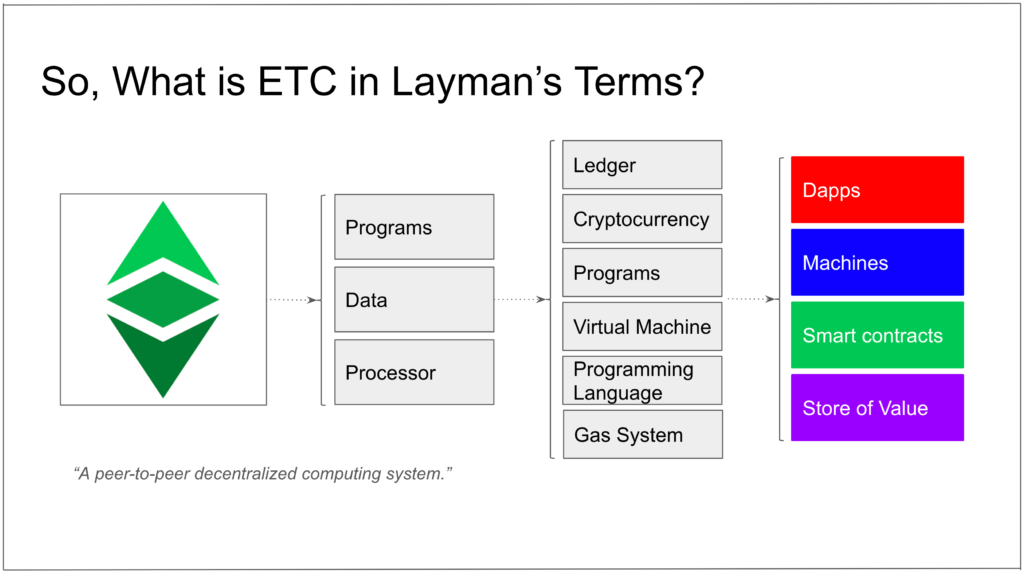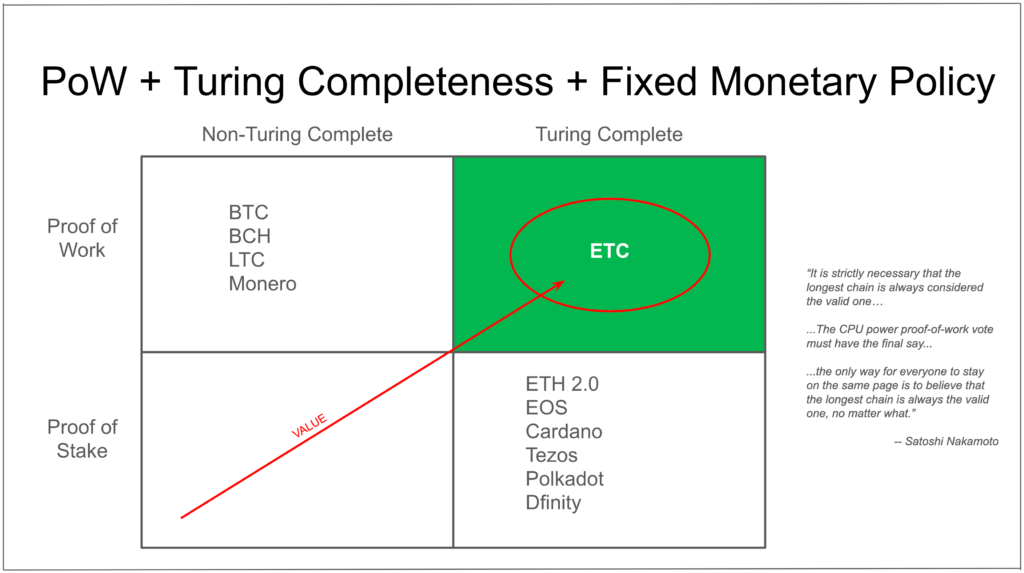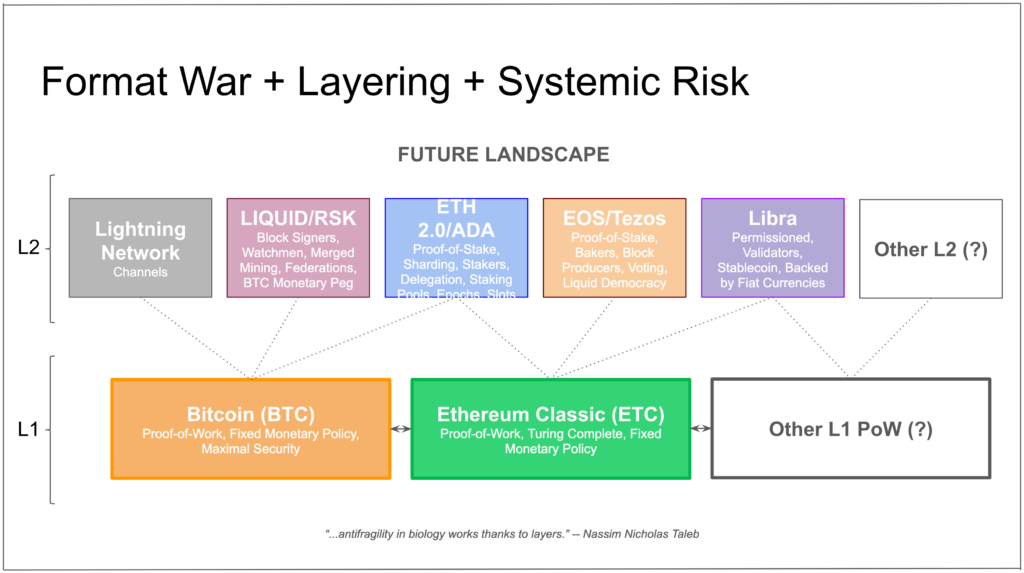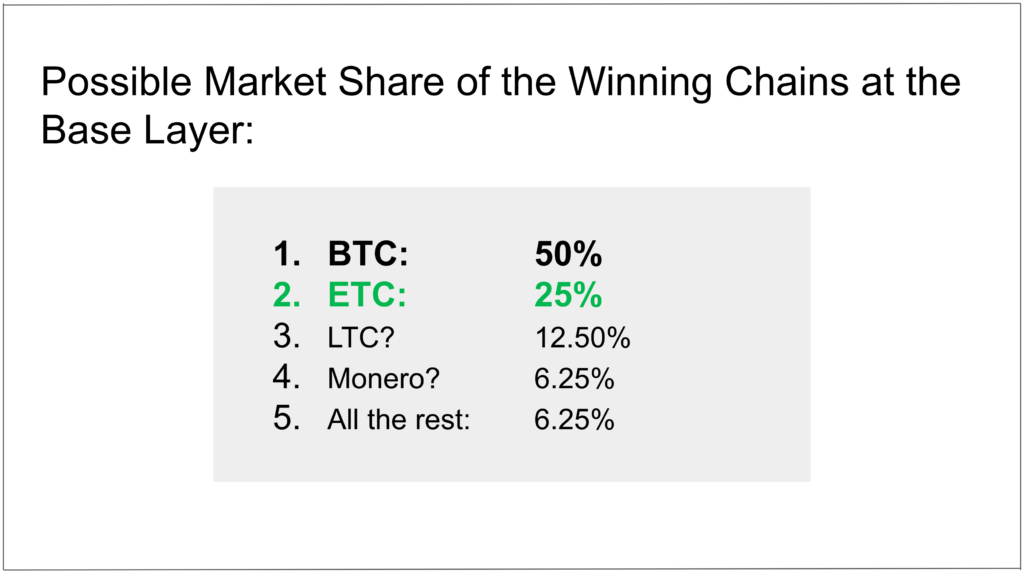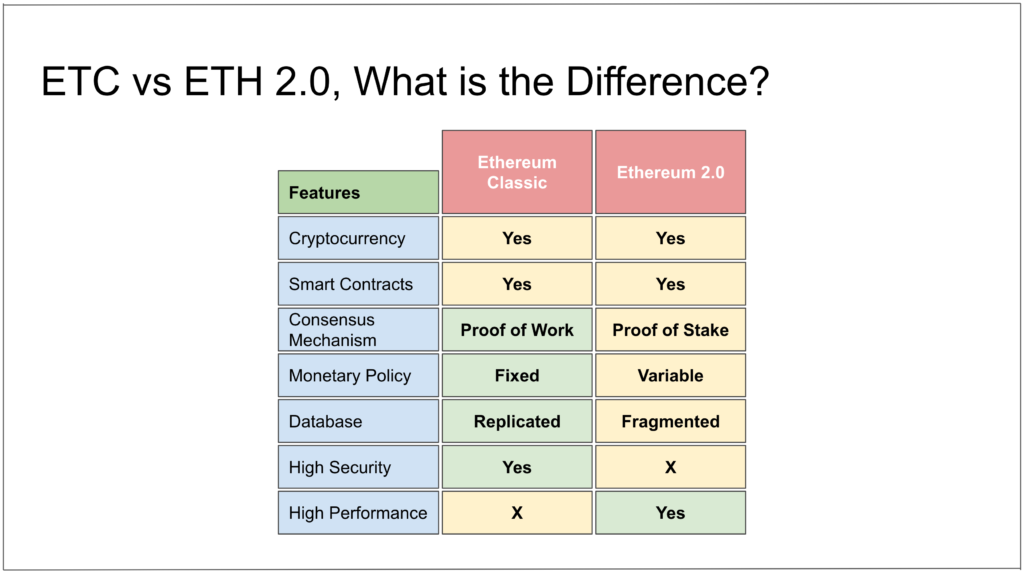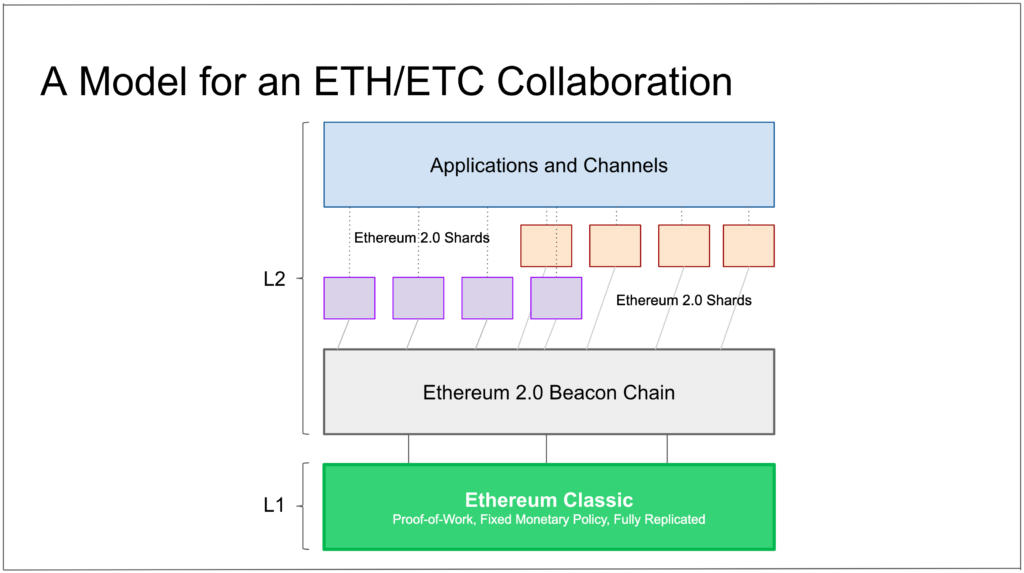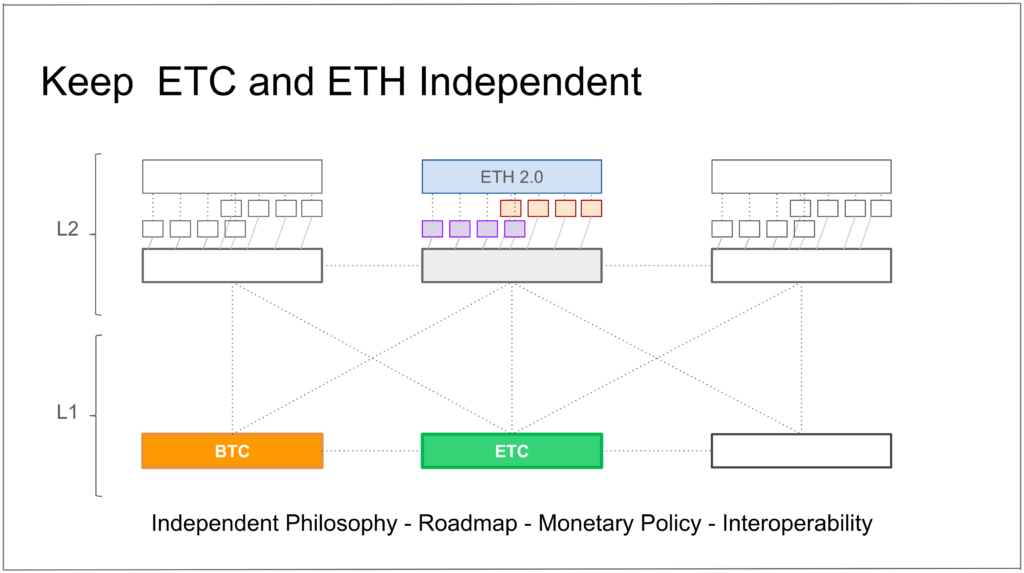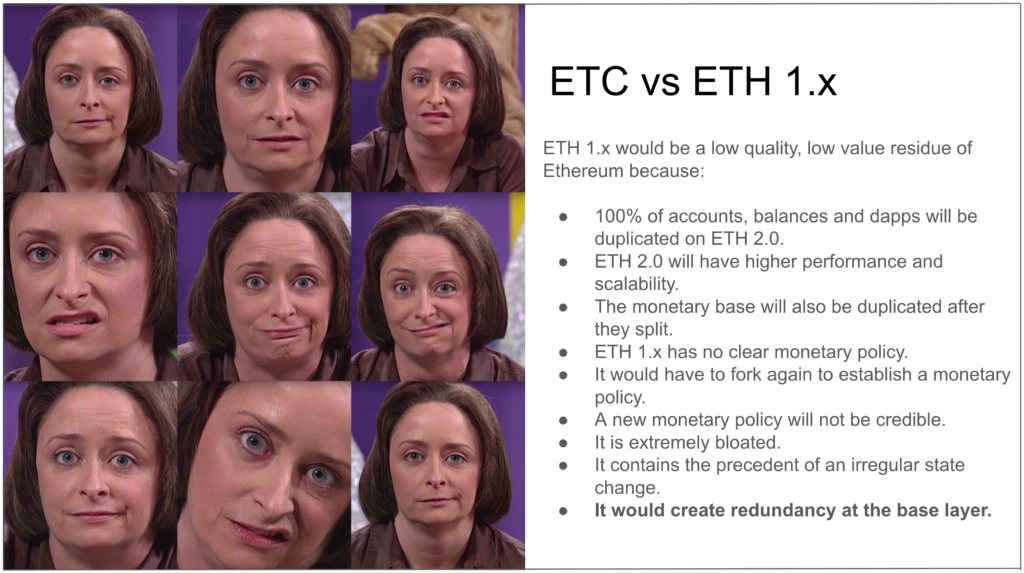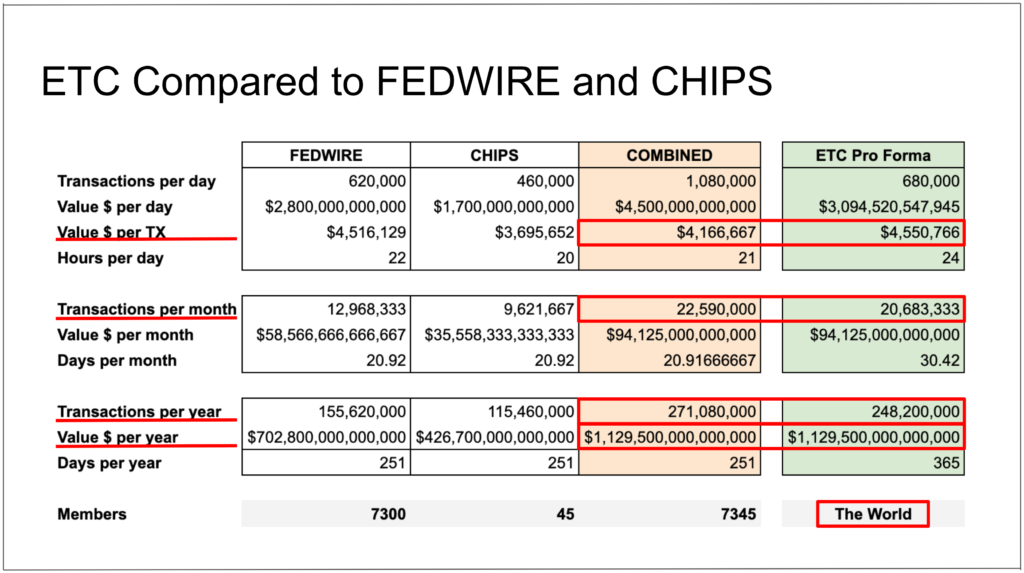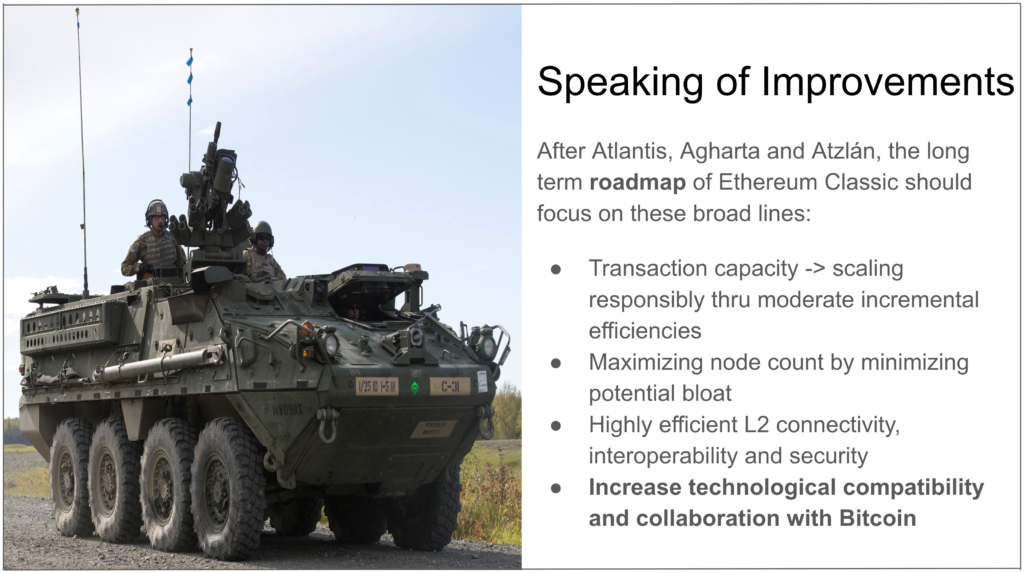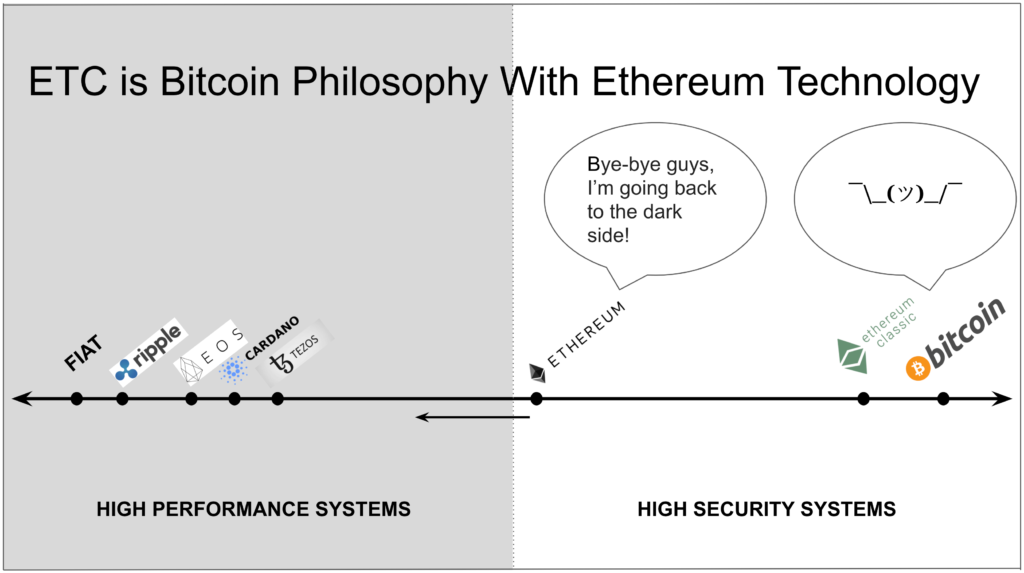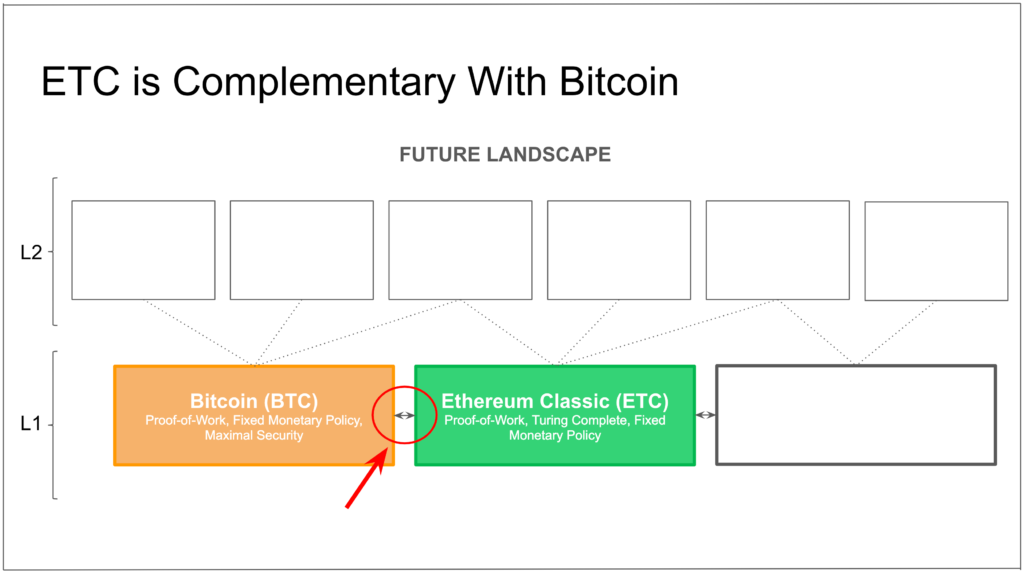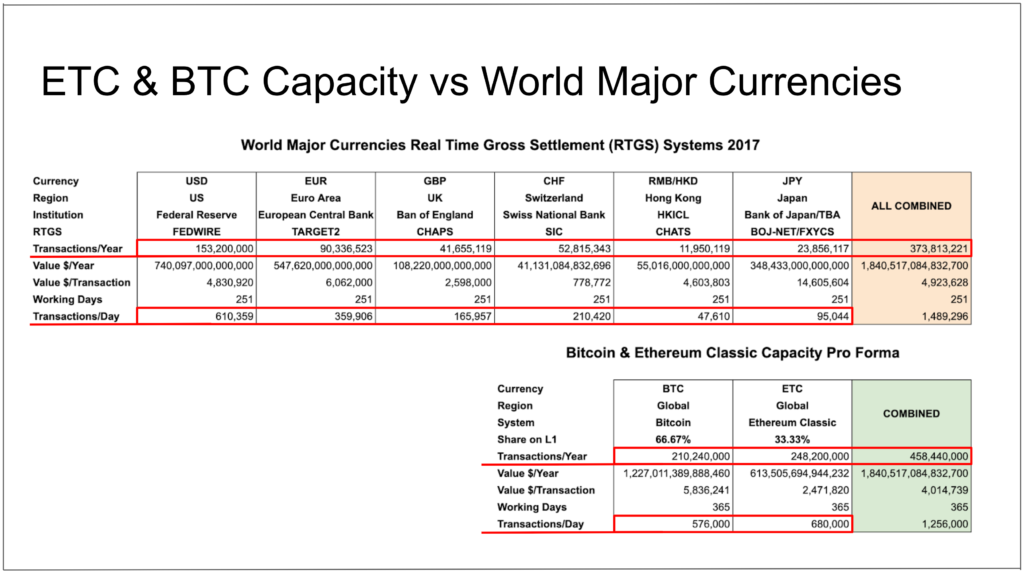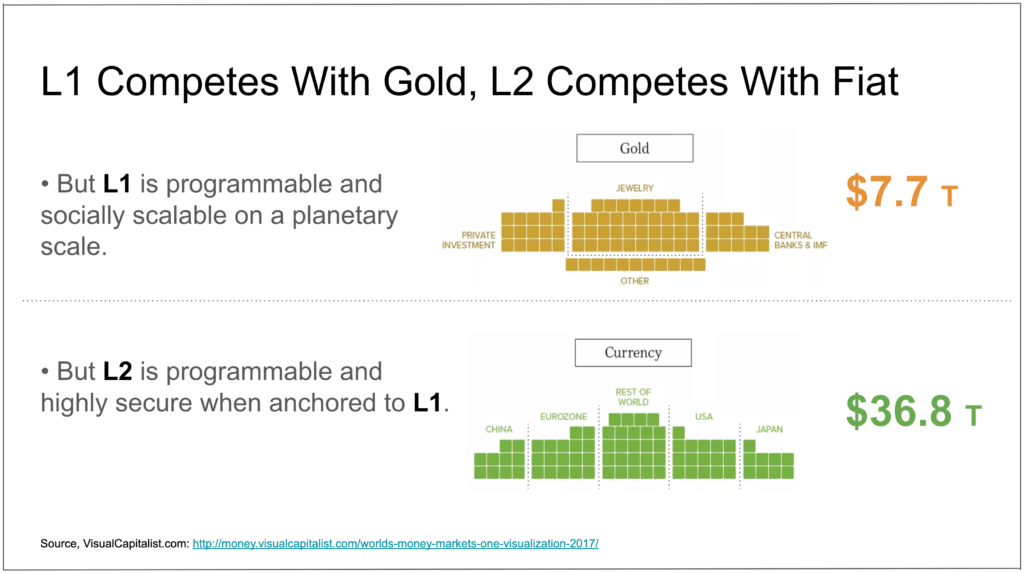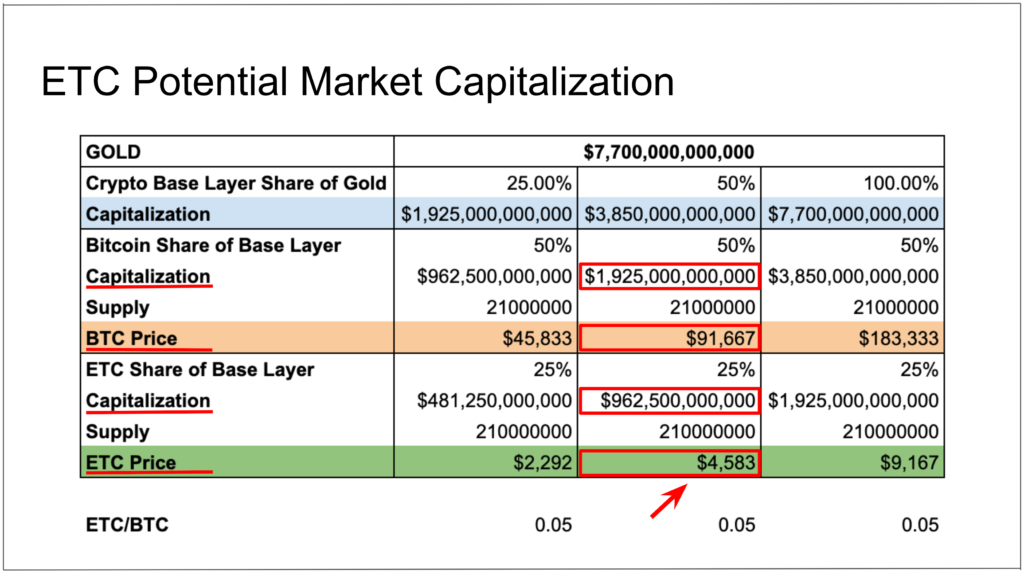You can listen to or watch this article here:
This is part two of a three part series:
• Part one: Ethereum Classic Principles
• Part two: Ethereum Classic Vision
• Part three: Ethereum Classic Opportunities
The series is a talk that I wrote about Ethereum Classic (ETC). Following is the segment about ETC vision.
So, what is ETC in layman’s terms?
It is a decentralized computing system that hosts programs, data, and has a processing capacity. The difference with your personal computer or using remote cloud services is that ETC is a remote computing peer-to-peer system, which makes it trust minimized and decentralized.
The system has 6 parts that makes it work, and, combined, they can power decentralized applications, machine to machine interactions, smart contracts between people and businesses, and its currency, that can be used as a store of value, which is also a perfectly legitimate use case for ETC.
ETC has a unique positioning in the highest value niche in the industry: PoW + Turing completeness + fixed monetary policy.
If you think about it, after Ethereum moves to ETH 2.0, ETC will be the only trust minimized, permissionless, and immutable PoW smart contracts platform in the world.
Such strategy is very important because there are 3 forces that will shape the future landscape of the blockchain industry, and ETC is very well positioned for that future:
• The “format war” will narrow the large number of blockchains in existence today to a very few in the future.
• “Layering” will divide the industry by security vs performance, where secure proof of work systems will be the base layer, or L1, and scalable proof of stake systems will be layer 2.
• Systemic risk means that, even if highly secure, all blockchains, including Bitcoin, still have some IT, operational, social layer, and thus generalized systemic risks.
Because people will naturally tend to diversify these risks, the Bitcoin Maximalist view is incorrect. It’s very likely there will be several systems at the base layer, not only one.
My prediction is there will be 3 or 4 “winning” blockchains at the base layer and all other systems will operate on top.
If my hypothesis is right, I think a reasonable guesstimate is that the ones that will prevail at the base layer will have approximately this distribution, where Bitcoin will have the lion’s share with around 50% and ETC will be second with somewhere around 25%.
So, in this context, what relationship can Ethereum and ETC have?
To answer this question it is worth looking at the differences between Ethereum and ETC when Ethereum migrates to ETH 2.0.
As it can be seen in the table, both ETH 2.0 and ETC are smart contract platforms and each has a native cryptocurrency.
ETC has decided, based on a high security strategy, to stay with proof of work, a fixed monetary policy, and full replication, and ETH 2.0 has chosen to pursue a high performance strategy going with proof of stake, a variable monetary policy, and sharding.
So, if ETC is not as scalable, but very secure, and ETH 2.0 is very scalable but not as secure, what is a good strategy for both to follow?
Up to now both Ethereum and ETC, and all other chains for that matter, have been competing for the same spot beside Bitcoin as premier blockchains fully secure and fully scalable. I think this is not possible, and the market will be reorganized in layers as explained before.
The opportunity that ETH 2.0 and ETC have in this context is to actually adopt the layered model and create a combined L1 and L2 system, as soon as possible to be first to market.
However, I think the key of any collaboration between ETH 2.0 and ETC is to preserve each chain’s styles and independence so they can follow their own technical roadmaps, monetary policies, and freely interoperate with other chains.
One thing that could delay or disrupt the trajectory for ETC as described in this talk is ETH 1.x. There is increasing discussion that ETH 1.x may be perpetuated after Ethereum migrates to ETH 2.0.
However, the market, especially developers, consumers, enterprise, and government, need the smart contracts industry to consolidate on a few winning systems to be able to start investing serious money and building viable products on these highly valuable technologies.
Following this logic, and other reasons in this list, I think a marginal ETH 1.x would be a low quality, low value residue of Ethereum.
As to ETC’s competitiveness, here it can seen that FEDWIRE and CHIPS, which are the large value Real Time Gross Settlement and Net Settlement systems in the US dollar system, have individually very similar transaction volumes as ETC’s transaction capacity.
In terms of monthly and yearly volumes, ETC can perfectly compete, on a pro forma basis, against FEDWIRE and CHIPS combined because it operates 24/7/365, while the others work only 251 days a year, and ETC is programmable and permissionless, while the others are not.
This makes ETC perfectly competitive, as is, relative to the US dollar high value payment systems, and, with further scaling improvements, it can totally even surpass those systems combined.
Speaking of improvements, after Atlantis, Agharta, and Atzlán, which focus on compatibility, I think to follow the ETC vision and strategy expressed in this talk, the long term roadmap of Ethereum Classic should focus on these broad lines:
• Increasing transaction capacity responsibly
• Maximizing node count by minimizing potential bloat
• Building highly efficient and secure L2 connectivity
• Increasing technological collaboration with Bitcoin
One question I get frequently is: Why does ETC have value?
My answer is that ETC is identical to Bitcoin as a currency, it’s an excellent store of value, and has the same underlying evolutionary reasons and physical features, such as being scarce, durable, costly to produce, divisible, fungible, portable, and transferable.
In other words, ETC is digital gold.
Additionally,….something Bitcoin does not have and will never have at the base layer,….it is Turing complete.
However, ETC DOES HAVE the same identical philosophy as Bitcoin. This is that it will always prioritize security over everything else.
The majority of the other systems in the industry have chosen performance.
All this makes ETC a perfect complementary system with Bitcoin in the “future landscape” hypothesis that I describe in this talk.
If Bitcoin will be this incredibly secure store of value, but with a limited capacity of having smart contracts at the base layer, then those smart contracts can perfectly be stored and executed inside ETC, and, with interoperability technologies, such as atomic swaps, they can move value between ETC and Bitcoin permissionlessly, effectively making BTC Turing complete at the base layer.
Before I compared ETC with FEDWIRE and CHIPs, but when comparing ETC and Bitcoin at the base layer against world major currency settlements systems, BTC and ETC have individually higher transaction capacity than all systems individually, and, combined, have higher transaction capacity than all systems combined on a yearly basis.
As I said before, the fact BTC and ETC combined are programmable and permissionless makes them extremely competitive, with much higher finality as compared to these global high value settlements systems.
This is yet another strength upon which ETC and Bitcoin could collaborate technologically to compete against global traditional systems at the base layer.
In my layered blockchain industry hypothesis, layer 1 competes with gold, but is programmable and socially scalable on a planetary scale.
Layer 2 competes with fiat money, but is programmable and highly secure when anchored to layer 1.
In terms of ETC’s market value in particular, I think the crypto base layer as a sector will eventually surpass the market capitalization of gold shown in the previous slide.
However, as a valuation exercise, assigning Bitcoin and ETC a 50% and 25% share of the crypto base layer respectively, it can be seen that, if the sector reaches just 50% of the value of gold, then Bitcoin will be worth around $1.925 trillion or $91,000 dollars per BTC, and Ethereum Classic will be worth around $962 billion or $4,500 per ETC.
Both estimates are on a fully diluted basis.
To read other parts of this series please follow these links:
• Part one: Ethereum Classic Principles
• Part two: Ethereum Classic Vision
• Part three: Ethereum Classic Opportunities
Code Is Law
